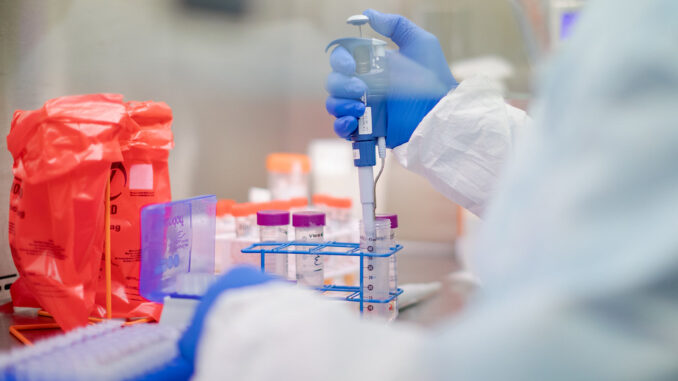
On March 20, the Governor’s office released a press release stating that the COVID-19 P.1 variant, also known colloquially as the Brazilian variant, has been discovered in New York State.
The case was found in a patient in their 90s from Brooklyn, with no recent travel history at Mount Sinai hospital in New York City. According to the CDC there are 118 cases of the P.1 variant across the U.S., with the first case reported in January.
It was initially found in Japan at the National Institute of Infectious Diseases (NIID) in four Brazilian travelers during routine testing. The P.1 variant was designated as a “variant of concern,” due to evidence that it is more transmissible, might cause more severe disease and that there is a potential for vaccines and treatments to have reduced efficacy.
“The detection of the Brazilian variant here in New York further underscores the importance of taking all the appropriate steps to continue to protect your health,” said Gov. Andrew Cuomo. “While it’s normal for a virus to mutate, the best way to protect yourself is to continue to wear a well-fitted mask, avoid large crowds, social distance, wash your hands and get vaccinated when it’s your turn.”
According to the CDC, a study in a cluster of cases in Manaus, Brazil, the largest city in the Amazon region, showed that 42% of the cases were caused by the P.1 strain. However, in October 2020, it was estimated that approximately 75% of the population had been infected with COVID-19. Since mid-December 2020, the area has seen a rise in cases causing concern for the potential of re-infections with this strain.
“This is a race between the vaccine and the variants, and we continue to make tremendous progress of getting shots in the arms of eligible New Yorkers,” said New York State Health Commissioner Dr. Howard Zucker. “In the meantime we remind New Yorkers to do everything they can to protect themselves and their neighbors as we continue to manage this pandemic.”
The P.1 variant isn’t the only variant discovered. The B.1.1.7 variant, commonly referred to as the U.K. variant, is responsible for 10,579 cases in the U.S. and the B.1.351 variant, also known as the South African variant, is responsible for 288, according to the CDC.
In January, scientists from the UK reported evidence suggesting that the B.1.1.7 variant may be associated with a higher risk of death compared to other variants. The B.1.351 variant shows some signs that the mutation on one of the spike proteins “may affect neutralization by some polyclonal and monoclonal antibodies,” meaning that antibody treatments may be affected.
In a news article published by the American Medical Association, John P. Moore, Ph.D, professor of microbiology and immunology at the Weill Cornell Medical College in New York, explains the conundrum of variants and vaccines. Moore explains that for individuals who have only received one dose of the vaccine, the B.1.351 variant acts almost as if the individual hasn’t even had the vaccine. Yet, when an individual has had two doses of the vaccine, the virus has a harder time, and is generally able to “impede” it, albeit more weakly than with the original COVID strain.
Moore also points to the importance of individuals becoming fully vaccinated with two doses, suggesting that receiving just a single dose of the vaccine could cause new variants to arise.
Politico is also reporting that there is some confusion and concern over the lack of use of Johnson and Johnson’s single dose COVID-19 vaccine. Somewhere between 2.3 million of the 4.3 million doses of the vaccine have been delivered, yet only 140,000 to 200,000 doses have actually been administered recently.
Some states, such as West Virginia and Pennsylvania, appear to have reserved their Johnson and Johnson doses for specific populations, such as the homeless or teachers and school faculty, but the rollout still remains rocky and slow.
Yet, overall, despite the lags with Johnson and Johnson, the U.S. continues to ramp up its vaccination efforts. On March 28, the New York Times reported that the U.S. was averaging 2.71 million doses of the vaccine per day and was on track to reach President Joe Biden’s goal of 200 million doses by his 100th day in office.
